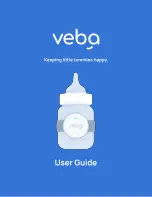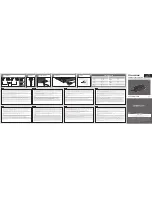
If the knife is not yet shaving sharp, repeat steps a and b above. Again test the blade for
sharpness. In the event the knife still is not sufficiently sharp it will be faster to first pre-hone it
in Stage 1 as follows:
USING THE HONING STAGE 1
a. Pull the blade alternately through the left and right slots (see Figure 3) of Stage 1, making
about 3 pair of pulls, taking about 3 seconds for each pull. Check the edge carefully to
confirm the presence of a burr (see Figure 4), which will be quite small since the Stage 1
abrasive is quite fine. To check for the burr, move your forefinger carefully across the edge
as shown in Figure 4. (Do not move your finger along the edge—to avoid cutting your
finger). If the last pull was in the right slot, the burr would appear only on the right side of
the blade (as you normally hold it) and vice versa. The burr, when present, feels like a rough
and bent extension of the edge; the opposite side of the edge feels very smooth by
comparison. When a burr exists along the entire edge, proceed to strop and polish again in
Stage 2.
b. If there is no burr continue honing in Stage 1, alternating left and right slots until a light burr
develops. When a burr is present along the entire blade length proceed as below to polish
again in Stage 2.
RETURN TO STROPPING/POLISHING STAGE 2
a. Make 3 pairs of pulls, alternating pulls in the left and right slots, taking 3 seconds per pull
for a 5” blade. Make 3 pairs of faster pulls, alternating left and right slots, taking 1 second
per pull. Test the blade for sharpness.
Figure 4. W hen you create a distinct burr along the
blade edge,
it can be detected by sliding finger across
and aw ay from the edge.
Caution! See text.
Figure 3. Santoku knife in right slot of Stage 1.
Figure 2. Santoku knife in left slot Stage 2 (double facet
Santoku blade).
5






























